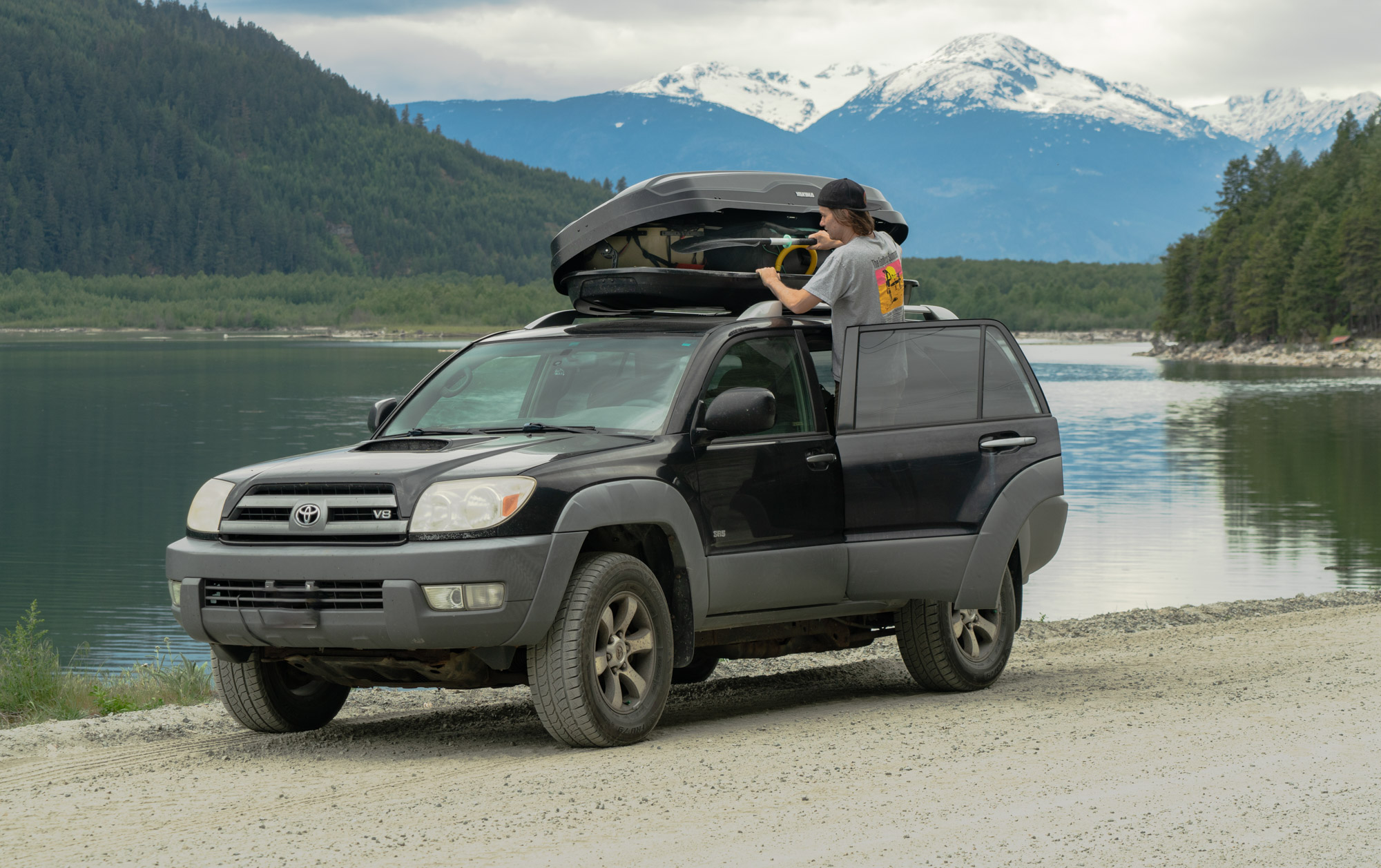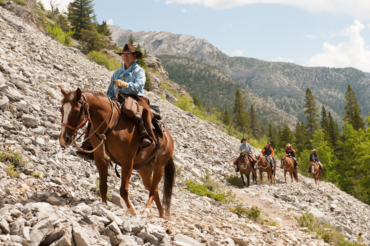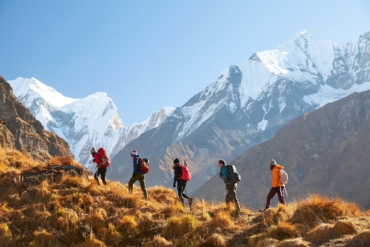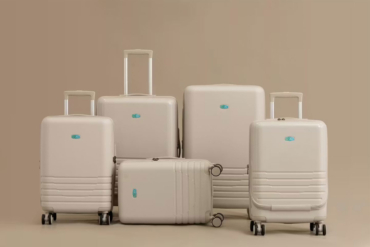Whether you’re road-tripping from coast to coast, experimenting with van life, or flying to a new U.S. region for an adventure, here’s a basic checklist before you go.
Once you’ve hit the pavement or you’re airborne, you can finally celebrate. The adventure officially begins! But the steps leading up to departure can feel like a marathon with bookings to confirm, routes to study, and nailing your packing list.
You’ll want to plan enough for your comfort level but leave space for spontaneity. The goal is to be comfortable and safe without bringing everything but the kitchen sink (believe me, you won’t use it all).
To help you get started, we created a travel packing checklist for domestic adventures in great detail below. If you’re interested in preparing for an overseas trip, check out our GearJunkie guide and checklist for international travel.
At print, domestic and international destinations continue to grapple with the pandemic. Be sure to check with each town and county where you plan to visit for up-to-date guidelines, as well as the Centers for Disease Control and any airlines you might book with. Pack a face mask, because regulations and needs differ from place to place.
Domestic Adventure Travel: Your Checklist
Over the past decade, I’ve traveled all over the world as an adventure writer and outdoor industry journalist. Before that, I lived and worked abroad. I also road-tripped all over Colorado and the Southwest throughout my childhood. I tell ya, packing for trips doesn’t get easier!
But like any routine, you get more efficient. And the evolution of travel accessories — like sleek, portable power banks, packable synthetic clothes, and snazzy luggage options — means going on trips has never been more comfortable.
Before I pack for any voyage, whether it’s an overnighter or multiple weeks, I write down a specific list of what I need. Even the most experienced vagabonds can forget to pack important items.
How to Pack: Timeline
Depending on how complicated or novel the trip is, I make a pack list one to 16 weeks prior. That way, I have enough time to pick up or order any new gear or apparel I might need. Some equipment can be hard to find, and the buffer can help.
I do a mock pack one to 2 weeks before I leave. You want to make sure everything you need fits in your luggage, doesn’t exceed a comfortable carrying weight, or doesn’t beyond airline luggage restrictions.
For road trips, try to pack everything in your rig one to 2 days before you head out. The process can be like a Rubik’s Cube, and you’d rather not postpone departure. (This has happened to me more than once.)

Travel Documents & Money
The travel documents you need nationwide aren’t as robust as when you leave the country. That said, it’s important to carry the basics in hand in case there’s a hiccup with a reservation or, worst-case scenario, a medical emergency. Having easy access to these documents can make your trip less stressful.
Regardless of the destination, always travel with:
- Personal ID
- Confirmation codes (booked trains, buses, flights, hotels, campsites, tours, etc.)
- Immunization records
- List of allergies and blood type
- Health insurance card
- Two forms of money (cash, credit card, debit card, or checkbook)
If you’ve misplaced your ID or it’s expired, you can travel with your passport — but definitely don’t lose it!
Make sure your debit card has an adequate amount, your credit card has ample available credit, and you know the caps of both. Some card issuers still require a travel notification; to avoid fraud freezes on your card, let them know that you’re traveling.
If you’re road tripping with a rig or motorcycle, don’t forget your registration and proof of insurance.
For security, store these documents in a safe, out-of-sight, locked place.
Electronics & Chargers
Who doesn’t travel with electronics these days? With smartphones that provide access to QR codes, music, a camera, and email, most folks carry one. Some travelers also bring a laptop, digital camera, and drone.
Battery Packs
To keep your electronics juiced up, it’s beneficial to bring a portable battery pack. A few options include the rugged Dark Energy Poseidon ($120), Brunton Torpedo ($36) for car travel, or Goal Zero Flip 20 ($30).
If you’re willing to go a bit heavier, I carry the Jackery Giant+, which has enough power to charge my phone like six times. I don’t need to worry about the battery bank losing energy due to low temperatures in the backcountry or while camping, and there’s enough to share with travel partners.
Charging Ports & Generators
If you need to recharge larger devices, don’t forget any necessary charging stations or cables. You can bring along a multi-charging port or dual-port for the car to speed up the process.
Outlets are usually available at hotels, libraries, restaurants, and co-working or coffee spaces. If you have a travel trailer with the capabilities, you can plug into shore power and plan your campsites around when you need to refill your batteries. You can also look into generators, like the EcoFlow Delta, and solar charging stations.
Be aware, outlets can be limited in airports.
Bags & Pouches
I prefer to carry my electronic accessories in a pliable waterproof bag or pouch, which helps protect them from any splashes or spills and makes them easy to find. The SealLine E-Case and Blocker Zip Sack are two of my favorites.
Travel Apps & Maps
Try to download any new apps before you hit the road, because the process can drain your device’s power and require a strong Wi-Fi connection. Some apps require you to set up an account or offer premium subscriptions for access to more resources.
Weather & Conditions
It’s advantageous to stay up to date on the weather and various conditions, like the size of the ocean waves or snowfall. A few app options include the Weather Underground App, MyRadar, Magicseaweed, and OpenSnow.
Topography & Land Use
Other apps let you study the topography and land ownership boundaries, like Gaia GPS, onX Backcountry, onX Hunt, CalTopo, and Fatmap. To learn the mountains or stars, use Night Sky and PeakFinder.
Routes
Sites and apps like Strava, Trail Run Project, MTB Project, and Hiking Project show crowd-sourced routes created by other recreationists.
Camping
To find various campsites, check out Recreation.gov, The Dyrt, and Campendium.
Personal Hygiene Items
If you’ve never used a toiletry bag, now’s the time. Having one when you travel keeps all your items in one place and is easy to transport around your hotel room or to a public shower. L.L.Bean makes one that hangs with nearly five stars and something like 1,600 reviews.
Baby Wipes
I’ll just start by confirming baby wipes are simply the answer to most of your on-the-road hygienic woes. Pick up a streamlined pack to use on grimy hands, face, stinky armpits, sensitive areas — yes, anywhere — and you’ll be so much more comfortable when you don’t have access to a shower. In a pinch, you can use them to wipe up dirt after a trail outing.
If a pandemic occurs or you’re visiting a mountain town with limited resources, please be sensitive to the available quantities on the shelf. People with babies get first priority.
General Hygienics to Consider:
- Toothbrush, toothpaste, floss
- Deodorant
- Razor
- Medications
- Lotion (hand, body, face)
- Eye drops
- Sunscreen
- Bug repellent
- Anti-itch cream
- First-aid kit
- Hand sanitizer
- Electrolytes like NUUN tablets
- Vitamins
A word of caution: Whether you’re flying or driving, pack liquids in a separate bag or cosmetic case. That way, if they explode — which can happen when you go up in altitude — the rest of your luggage doesn’t get a special surprise.
Hydration
A part of maintaining personal health is staying hydrated. Bring a reusable water bottle to save money and the planet.
Read about more environmentally friendly travel gear in our guide Single-Use Plastic Alternatives: Eco-Friendly Travel Essentials.
Contacts & Eye Glasses
As someone with sensitive eyes who wears contacts and plays outside, it’s honestly been a hurdle to keep my eyes clean. Whether you wear monthlies or dailies, don’t forget your kit, including sanitizing hand wipes, eyeglasses, eye drops, disinfecting solution, and a contact lens case.
Make sure you have enough contact lenses to cover the duration of your trip. Pack at least one extra set, because they can occasionally be defective, fall out, or get damaged.
Active Skin Repair Spray
For every trip, I’ve started bringing Active Skin Repair Spray. It doesn’t sting, is compact, and is utilitarian. I’m a walking bug magnet, so I use it on mosquito bites, rashes, sunburn, zits, chafing, minor cuts and scrapes — you name it.
For severe ailments, seek medical advice.
TSA Requirements
If you’re traveling by plane, TSA requires that all of your liquids fit in a quart-size bag and are no larger than 3.4 ounces each. That includes aerosols, gels, creams, and pastes.
One workaround is to pack sunscreen sticks like the ones made by Joshua Tree and Protekt, which also has a tinted option — but make sure you don’t get it on your shirt collar because it doesn’t come out.
Sleep Aids
A comfortable neck pillow is a game-changer for flights or sitting passenger on road trips. That person dreaming and drooling? It could be you. And a travel blanket or fleece jacket and warm socks can be cozy to cover up with if the air conditioner is blasting on high.
It’s super nice to have a set of earplugs, whether you’re on an airplane or need to pull over at a rest stop to get some Z’s. Some people use eyeshades to block light, too. It’s also easy enough to bring noncaffeinated tea packets to help you relax.
When you wake up, it’s refreshing to have water, a toothbrush and toothpaste, chapstick, face mist, a hair comb or brush, deodorant, and eye drops on hand. Also, factor in jet lag and time changes into your itinerary, including how you might feel the first day or two in a new destination or back home.
Ultimately, a sleep routine is personal. If you need to bring your Tempur-Pedic pillow from home, we won’t judge.
Backpack(s)
Electronics
If you bring a laptop, use a pack with an integrated, well-cushioned laptop sleeve for protection. That’s pretty key for carry-ons and road trips alike — cargo can get jostled around. If you’re carrying expensive electronics, look for a pack that’s waterproof and includes dividers as well as a hip belt and chest strap.
Learn about our favorite options in The Best Camera Backpacks.
Around Town
No matter how small my suitcase is, I always bring the Sea to Summit Ultra-Sil Travel Day Pack. It’s compact, lightweight, and handy for grocery store runs, beach or picnic outings, and cruising around town. The seams and zipper aren’t waterproof, but the material is, so it provides some protection for my phone, journal, and book.
Recreation
If you’re planning to get out on trails while you travel, it’s comfortable to wear a sport-specific pack. I like one with a cushioned back panel for support and comfort plus a hip belt. I also opt for packs with a hydration sleeve and reservoir compatibility, so I remember to drink water as I go.
If your trip is based on backpacking, you might be able to use your backpacking pack as your carry-on, depending on the pack size and space limitations of the airline.
Dry bags with backpack straps can be helpful for keeping wet stuff separate from the rest of your river gear and traveling with an open truck bed on a road trip.
Read more about GearJunkie’s favorite packs in The Best Travel Backpacks, The Best Backpacking Backpacks, and The Best Dry Bags.
Proper Footwear
Aim to pack at least two pairs of footwear for a trip. These days, a lot of hybrid footwear exists that looks good on trail and in town.
If you need to pack your shoes in luggage, grab a separate bag to keep your apparel clean and odor-free like the Sea to Summit Travelling Light Shoe Bag.
Spring, Summer, Fall
For three seasons a year, I bring a closed-toe pair of shoes with full protection, breathability, and support for long walks. A pair of trail running shoes usually works for hiking, camp, and exploring around town.
Then, I bring an open-toe, super breathable pair of sandals that are easy to slip on and off. I prioritize comfort for both.
Winter
For cold-weather trips, I bring an athletic pair of waterproof boots and an all-around cozy winter boot that’s quick to pull on and off. If the trip revolves around skiing and snowboarding, I definitely bring my sport-specific boots plus a portable boot dryer.
Sport-Specific
If you’re planning on rock climbing, surfing, mountain biking, or another specific sport, make sure you bring that type of shoe. If you’re learning the sport, contact the guide or outfitter you intend to work with to see if they have rentals.
Read more about supportive footwear options in our GearJunkie guides: The Best Hiking Shoes, The Best Trail Running Shoes, The Best Hiking Boots for Women, and The Best Hiking Boots.
Climate & Weather-Specific Clothing
Research your destination to learn what the weather is like during the season you’ll be there. The week of your trip, check the weather forecast.
If it’s a long trip, consider what the weather will be when you arrive home, too. The last thing you want is to end up in a downpour without a rain jacket and pants (that’s happened to me) or without a down coat in a blizzard (also happened).
Synthetic apparel is a solid option because it’s comfortable across activities. Some designs are made to combat odors and block harmful UV radiation from the sun. Other apparel is built specifically for bug protection.
You might need a rain jacket, down jacket, and fleece. Bring a variety of comfortable socks for everyday use, recreation, and warming up at night.
Don’t forget to pack enough underwear, especially if you won’t have time or resources to do laundry, as well as a hat and sunglasses.
To brainstorm travel apparel options, check out our guide The Best Men’s Travel Pants.

Swimsuit & Quick-Dry Towel
If you plan to swim, hot tub, or hike up to natural hot springs, don’t forget your bathing suit. Well, some of those places are fine with nudity, but ya never know. After you relish the water, don’t forget your bathing suit. (Happened to me. Don’t worry — I hiked back to get it.)
For high-action water sports, bring a suit that doesn’t easily get pulled off. Sun shirts and cover-ups are protective for blocking the sun between dips. For the beach, consider a rash guard. For women, read about more product options in Best Swimsuits for Active Women.
Post water play, it’s favorable to have a quick-dry towel on hand, which comes in various sizes. Some include carry pouches, but be sure to hang dry the towel to prevent odors. Rinse your bathing suit and hang that to dry, too.
Creative Outlets
Before Instagram existed, people would do things like draw in sketchbooks or read books when they travel. We’re still for it.
Here are some creative outlets you can enjoy in the place you visit or while taking time away from your regular routine — including a digital cleanse:
- Sketching
- Writing poetry
- Journaling
- Reading books
- Digital photography
- Jewelry making
- Letter writing
- Crochet or knitting
Again, if you’re interested in preparing for an overseas trip, check out our GearJunkie guide and checklist for international travel.
















